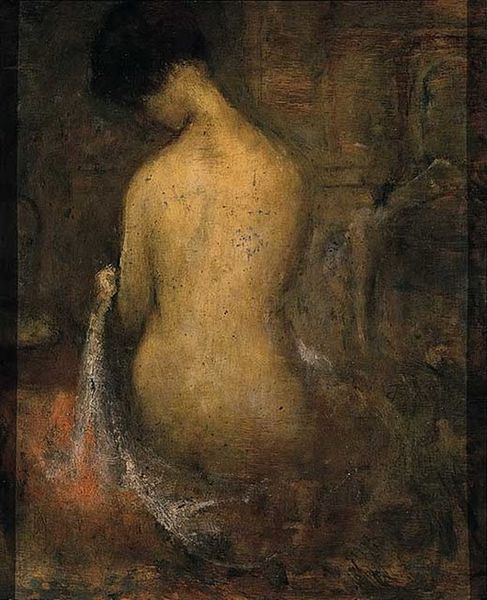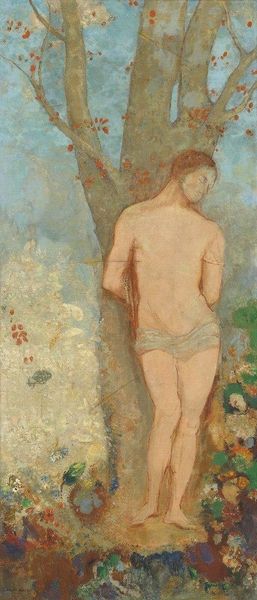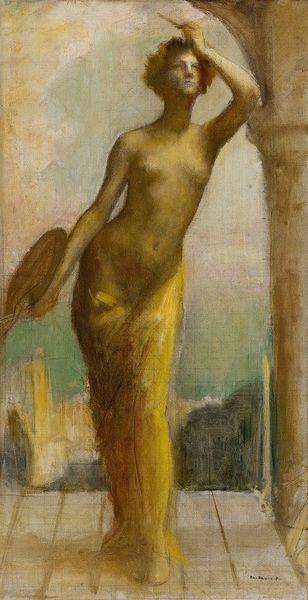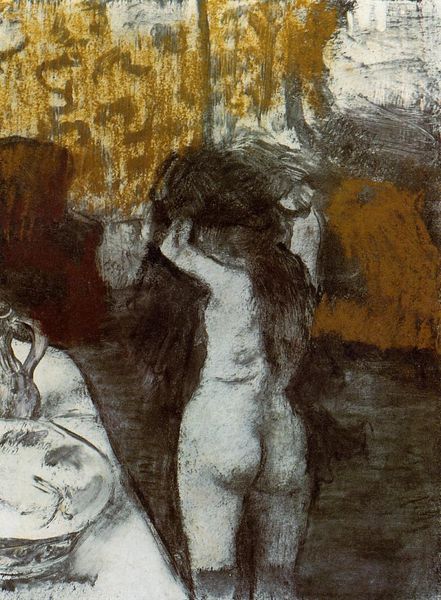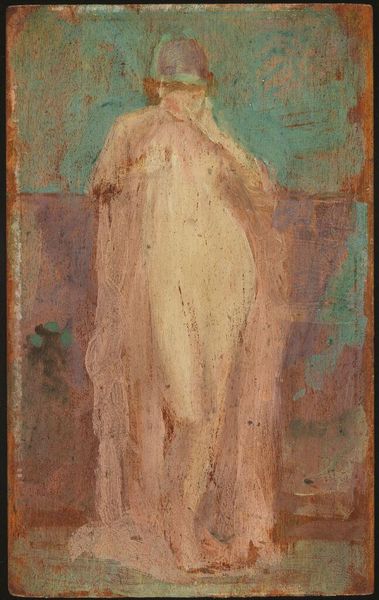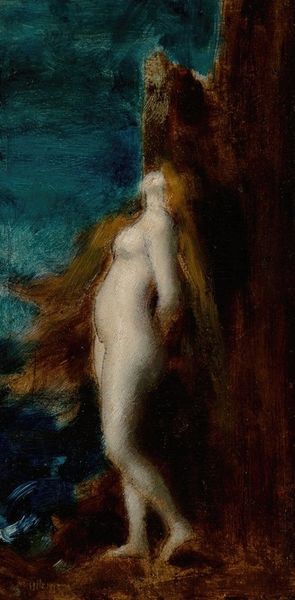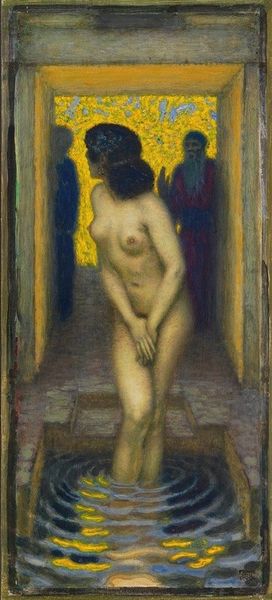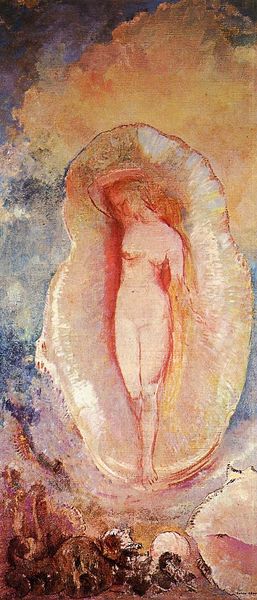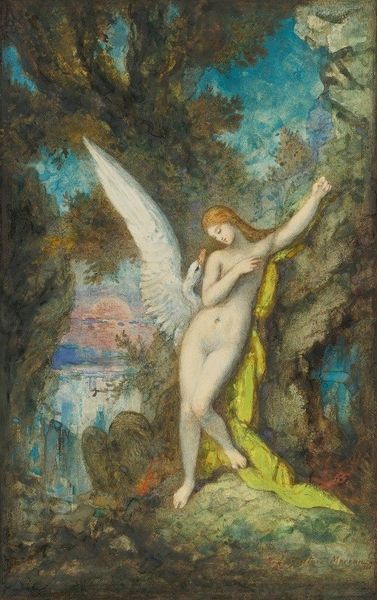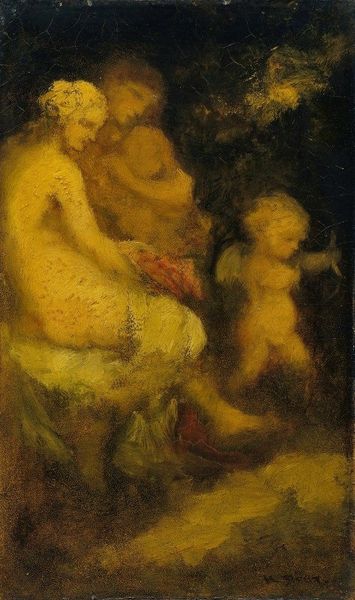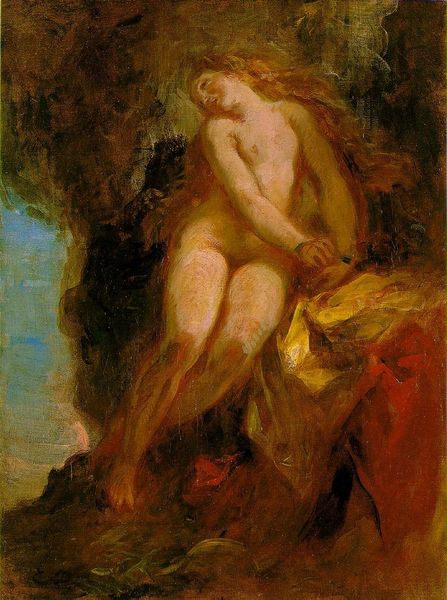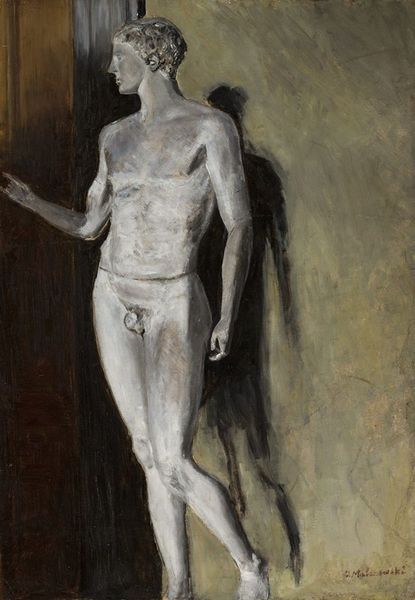
painting, oil-paint
#
painting
#
oil-paint
#
figuration
#
oil painting
#
roman-mythology
#
mythology
#
symbolism
#
history-painting
#
nude
Copyright: Public domain
Curator: We’re looking at a painting titled “The Birth of Venus” by Odilon Redon. Redon was a key figure in the Symbolist movement. Art Historian: It strikes me as immediately vulnerable. Venus is not emerging triumphantly. The heavy, almost claustrophobic shell makes her appear… fragile, even mournful. Curator: Exactly. Redon's Symbolism often explores themes of isolation and the inner life. Classical depictions of Venus frequently celebrate ideal beauty and overt sensuality. This feels like a deliberate subversion. How might we interpret this diminished power of Venus in the late 19th century? It raises crucial questions about evolving ideas of femininity. Art Historian: Absolutely. The shell itself isn't pearly or radiant, but a dark, rough form, almost organic – evoking less a beautiful beginning, more a difficult, almost painful process. I keep returning to that heavy shell; it's so visually dominant. The rough texture creates a womb-like enclosure, with earthy rather than ethereal qualities. Perhaps alluding to mortality. Curator: The composition rejects traditional academic portrayals for an engagement with interiority. Considering Redon's position as a symbolist artist, one has to ask how such depictions of mythology can still speak to societal gender constraints today. Art Historian: Visually, it evokes not the triumphant arrival of beauty but rather, perhaps, an inward-focused understanding. In many classical depictions, Venus is immediately the object of the male gaze; here, she seems to shy away from it. Even the earthy color palette seems to suggest an undercurrent of unease, unlike other jubilant “Birth of Venus” depictions. Curator: I appreciate how this reframes classical iconography to grapple with modern anxieties. There’s an underlying discourse around gender and its implications within a societal framework of identity that’s palpable, and really comes alive in Redon's choices here. Art Historian: It certainly lingers in the mind. I appreciate that Redon subverts expectation. The visual symbols invite a more complex and profound understanding of not just beauty, but vulnerability and the burdens of idealized femininity.
Comments
No comments
Be the first to comment and join the conversation on the ultimate creative platform.
